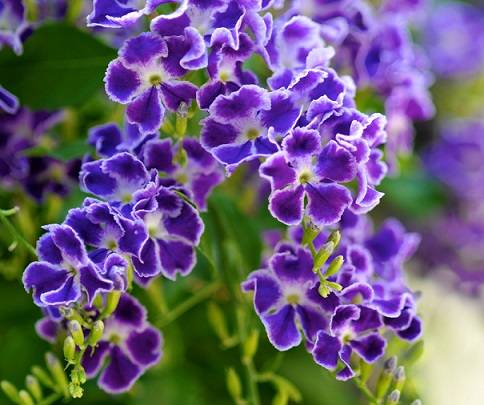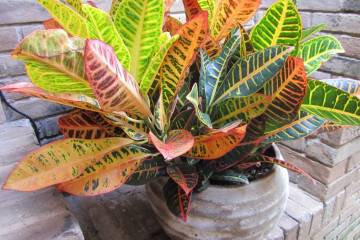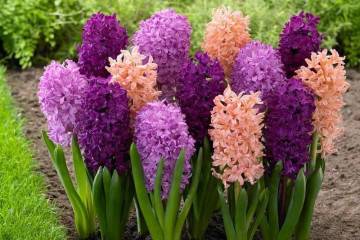Birch - houseplant, home flower
Content:
Birch is the informal name for an evergreen houseplant that can often be found in office buildings. The home flower is picky and undemanding to care for, it will not be difficult to grow it. The flower of a room birch got its common name due to the similarity of leaves with the shape of a birch leaf.
Birch - a birch-like houseplant
Due to their unpretentiousness, curly birches are often used for landscaping offices, schools, apartments. Thanks to its long branches, the plant resembles a miniature potted tree.
Often, an indoor flower is used to decorate a wall. To do this, it is placed in a pots and hung. Diamond-shaped leaves compensate for the lack of flowering, and are the main decoration of the interior. The people call the plant a birch, not particularly understanding the genus and species.
What is the correct name for a houseplant that looks like a birch
In literature and scientific works, the flower is called cissus and roicissus. A plant native to Africa. The flower got its scientific name from the Greek "kissos", which means "ivy".
But among all the variety, the Duranta variety is considered the most amazing. It mesmerizes with its beautiful blue, purple and white flowers. It is also called pigeon berry. Previously, it could be found in almost every home, now only in greenhouses. Some growers refer to the plant as "Heavenly Flower" or "Farewell Maiden's Tear".
What does a birch look like, which family does it belong to
Birch is a houseplant that belongs to the Vinogradov family. It resembles a liana with curly branches on which diamond-shaped leaves are placed.
Shoots grow from 0.5 to 1 meter. Leaves on top are bright green, below they are lighter in color. A birch tree with thin tendrils clings to the wall and other objects that are in the house.
Features of caring for a birch at home
Roicissus is easy to grow at home. For this, it is necessary to organize proper care. In order for the plant to delight with its green leaves, it is necessary to select the soil and top dressing. How to care for a birch houseplant? The answer is simple - follow the rules of watering and maintain humidity, as well as monitor the temperature and lighting.
Temperature
Birch is a house plant, therefore, for full growth and development, it is necessary to establish the optimal temperature regime. In summer, the temperature should be +19 .. +26 degrees Celsius. In winter, a decrease of up to 14 degrees is permissible.
The flower can grow at five degrees Celsius. But a low temperature can provoke various diseases. You cannot keep the plant near heating appliances, the flower will begin to shed its leaves.
Lighting
The birch tree loves good lighting, but does not tolerate direct sunlight. Under the influence of the sun, the leaves will become faded, and burns will appear on them. The light should be slightly diffused. Window sills located on the east and west sides are considered the best place in the room.
Watering
Birch is a moisture-loving plant. Watering the flower is necessary depending on the season.
In the spring and summer, during the active growing season, the Roicissus is watered twice a week. In autumn and winter, the amount of watering decreases.
You cannot fill the birch tree. Excess moisture provokes root rot. Watering should be done when the topsoil is dry, preferably after sunset. For irrigation, settled, filtered or melt water is suitable.
Spraying and moisture
At high temperatures, the plant must be sprayed.
The flower prefers high humidity. Therefore, it is necessary to regularly spray indoors. To maintain moisture, flower growers often place a container of water near the flowerpot. Special devices can be used as a humidifier.
Priming
Birch prefers loose nutritious soils, the basis of which is sod and deciduous soil. In the finished soil, you can add humus, one part to 2 parts of turf and the same amount of leafy soil. For looseness, one part of sand or peat-sand mixture is also added.
Top dressing
Birch is an indoor flower that needs regular feeding. For the full development of a birch, such chemical elements are needed: as phosphorus, potassium, nitrogen. Fertilize the plant every 15 days.
As a top dressing, special complex fertilizers are used. You can purchase ready-made mineral complexes:
- Fertika kristalon. They are introduced after unsuccessful watering during the growing season. The product is diluted in a ratio of 0.5 grams per 10 liters of water.
- Radifarm. Vitamins, polysaccharides and amino acids are added to nitrogen, phosphorus and potassium.
- Sugar. Often used for feeding not only birches, but also other indoor plants. 1 teaspoon of sugar is added to a liter of water. Fertilize with a sugar solution once a week. Pour the top dressing exclusively at the root.
Pruning
The plant grows very quickly. Caring for a home birch plant includes regular pruning. Cissus is the perfect plant for those who like to experiment. Cut off those branches that have dropped the foliage. Pruning allows you to remove those parts of the crown that do not fit into the shape of the plant.
There are two types of trimming:
- supportive - keeps the plant small;
- stylistic - improves the appearance.
Cut off the branches with a sharp knife or scissors. Before starting the process, the instrument should be disinfected.
How the birch reproduces
The decorative flower is propagated in two ways by cuttings and division. Dividing the bush is grown in spring or late summer. The flower is removed from the pot and divided into several parts. Young shoots are planted in separate flowerpots.
Reproduction by cuttings is carried out at any time of the year. Shoots are cut from the bush, on which there are two or more leaves. The cut cutting is placed in a solution of potassium permanganate, after six hours it is immersed in a container with clean water. As soon as the sprout takes root, it is planted in a container.
Birch transplant
A home birch flower needs a transplant as it grows. They do this every three years.To prepare the soil at home, it is necessary to mix fertile and sod land in equal proportions. Add a little humus and river sand to the substrate.
A pot for a birch should be chosen of medium and small sizes, with a drainage hole at the bottom. Of the materials, pots made of ceramics and clay have proven themselves well. These materials are highly breathable. At the bottom of the flowerpot, you need to place expanded clay or pebbles, and sprinkle a little with soil.
Cissus is removed from the container, then the roots are examined for the presence of rot. If sick roots are found, they must be carefully removed. The plant is placed in a new container and covered with soil.
Possible problems in growing birch trees
Why does the plant start to wither and dry? The reason is improper care and maintenance. The plant must be constantly inspected for the presence of pests. Problems that gardeners may face:
- The deciduous plate deforms and dries. The reason is the dry air in the house, in order to correct the problem, it is enough to humidify the air around the flower.
- The leaves turn pale and fall off. This is due to the high temperature. Place the birch pot in a cool room. In summer, the flower can be taken out into the fresh air.
- Brown leaves appear due to too humid air and constantly wet soil. Do not water the flower until the soil is two centimeters dry.
- Abundant foliage is the result of a flower being in a draft and in a cold room. The situation can be corrected by normalizing the temperature regime.
- Leaves grow dull due to lack of minerals. Adding nitrogen will restore the original color to the birch leaves.
- Stunted growth is associated with a cramped pot. Transplanting a Rocissus into a larger pot will cause new branches to appear.
With poor maintenance, the flower can get sick, it is spoiled:
- Gray rot. A gray mold forms on the leaves, then the leaf begins to rot. This is due to waterlogging of the soil. You can fight disease with fungicides.
- Spotting. It is manifested by the formation of dead areas on the leaves. Unlike the fungal spot, the bacterial spots have clear contours. Three sprays are carried out with a 1% solution of Bordeaux mixture.
- Spider mite. The plant is covered with a thin web. White-yellow blotches are visible on the leaf. To destroy the pest, the leaves are washed with soapy water, and then Actellik and Fitoverm preparations are used.
- Greenhouse aphids. The insect is dangerous because it sucks the juice from the plant. The leaves turn orange, then curl and fall off. Against aphids, drugs Actellik and Fufanon are used.



















